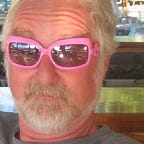Measuring social capital to create a loan fund
For the Watershed Fund, I am proposing that we can only lend to farmers who have $10,ooo of stored gratitude in the system we could harvest through a benefit dinner. So we are starting to think about how to map the relationships of reciprocity in the local economic bioregion as my old partners in UNESCO biosphere system call it. We map out from our first borrowers and solid pipeline.
Our goal is to reduce risk, document that the ongoing sharing is cutting costs such that risk is reduced and profit can be enhanced, through somebody loaning their backhoe when needed, etc. We have to price what DeAmon Harges calls Social Currencies; the non cash transfer of aid, resources, material, labor, shared equipment, pitching in when needed, etc. We see that as a way to reduce the cost of replicating this fund, through social capital mapping.
This is an analysis I think, that starts with a community organizer power map, like Ben Williamson created to help guide the recent campaign to get the Tourism Development Authority to put around $7 million of the $40 plus million and growing they get yearly toward housing their employees who can’t afford to live in Buncombe County. Our team has learned a lot from Ben, and he has agreed to be an advisor to the Watershed Fund, someone who will give us 15 minutes to ask his advice when we need it. Having that in the bank, makes this mapping effort, which is more indepth than anything I have tried do far lower stress.
Ben is a brilliant analyst of the system and finds the right pressure points to get things done; his instincts on where to intervene in a system are in line with Donella Meadows outline of where to intervene in a system. So we have that genius on call; a huge gift.
But we want to do something Ben has never done: head toward a rough quantification of the non cash transfers of good will throughout the social ecosystems of our borrowers. We need to see that it is there to justify a loan, but then we are mapping it as part of a risk reduction methodology, in effect seeing good will in use.
These things that create customer loyalty and market acceptance are, at the time of the sale of a business, bundled up under the vague heading of good will and often results in a 15% increase in sale price. ÑWith one business Rosa Lee and I got more than 20% because it was clear the whole ecosystem loved our business doing what it was doing right where it was positioned.
But good will is never measured in real time, that I have ever heard about. We would be, if we decided to go this route, measuring the flow of good will as a social currency in the farm ecosystem. Knowing how to apply that kind of risk reducing social currency evaluation. could lower the cost of replication of any of the funds I work on with Eagle Market Streets CDC. Including the Watershed Fund.
This is a fund that sets the farmer free from the power of money, and that values what the farmer knows is important.
